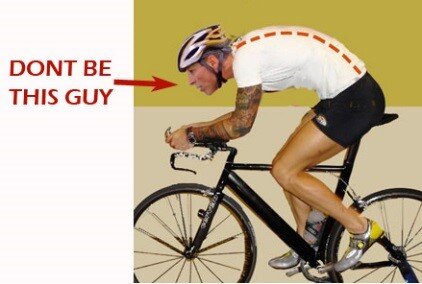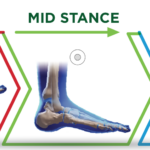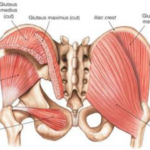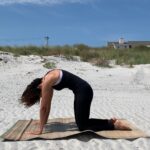The human back is a complex network of muscles and bones that connects the upper portion of our body to the lower via our spine. Most often, when a person complains of pain in their back, it is usually in the neck (cervical spine) or the lower back (lumbar spine). The upper and middle portion or the thoracic spine is often overlooked even though it can be an important source of pain and dysfunction.
In this article, you will learn how the thoracic spine can impact your athletic performance, as well as your breathing patterns.
Anatomy of the Thoracic Spine
Your spine consists of 3 distinct sections: cervical, thoracic, and lumbar. The spine creates an S-shaped curve, with a lordosis (forward curve) in the neck and lower back, and a kyphosis (backward curve) in the chest and the hip/pelvic areas. The thoracic spine (T-spine) is made up of 12 vertebral bones that articulate with your ribs and create a cage to protect your heart, lungs and other organs. The thoracic section of the spine is not as mobile as the lumbar and cervical sections; it can twist and rotate, and offers the most stability in the spinal column.

Thoracic Kyphosis: An Exaggerated Curve
The thoracic kyphosis can become excessive due to chronic incorrect/seated posture, poor loading patterns during workouts, or an accident. When the middle of the back is tight, the shoulders become rounded forward, which causes shortening of muscles in the front of your body. The ribcage can be pushed forward, limiting the contraction of the abdominal muscles, and putting strain on the accessory breathing muscles of the upper chest. When the mid-back is compromised, the stress is transferred to the neck, shoulders, and lower back.
So why is mobility important?
The T-Spine is integral to posture, upper and lower limbs movements, and breathing.
Decreased thoracic mobility and poor posture can affect performance in any sport, but plays a much larger role for swimmers, kayakers, tennis players, and golfers and any sport that requires thoracic extension or rotation.
An increased thoracic curve can also lead to an increase in the lumbar spine lordosis and changes in the position of the pelvis – this can alter the way forces are distributed on the legs which could be detrimental to any sport that involves running.
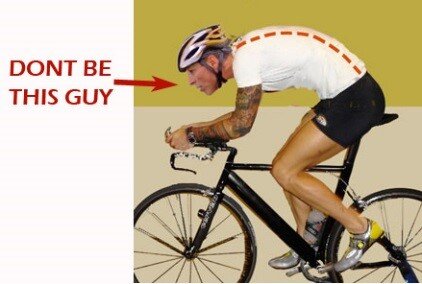
In addition, normal breathing patterns can be disrupted if the ribs are not moving properly. The Diaphragm muscle, which is the main muscle of respiration, creates a dome shape at the bottom of your ribcage. It can be difficult to fully expand the muscle (i.e. take a deep breath) the ribs are not moving properly. If the rib joints at the spine and surrounding musculature are stiff and tight, there is less movement with each breath. This makes it difficult to take a breath at higher breathing rates during cardiovascular activity. This can be especially difficult in sports that require sitting or being bent over such as rowing, kayaking or cycling.
Mobility exercises
The following exercises can be added to your workout routine to help open up the front of your chest, as well as create length, rotation, and strength in your shoulders, thoracic spine and diaphragm.
Thoracic Windmill with Towel
Lie on your side and place a rolled up towel perpendicular to your body just under your shoulder blades. Reach your top arm to the other side of the room, allowing your chest to open with it. Complete 10-15 reps on each side.

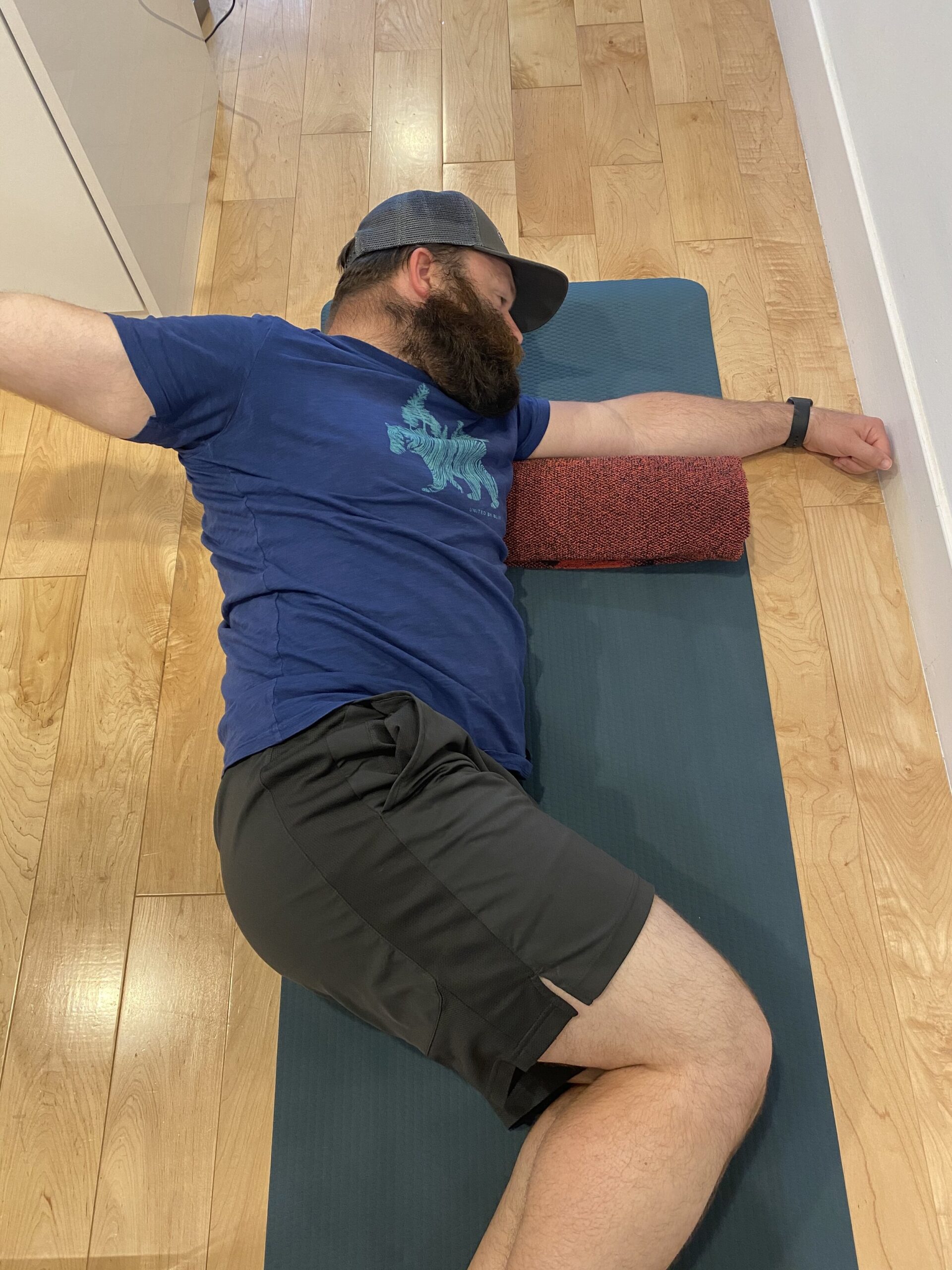
Quadruped Thoracic Rotation
Start on all fours and bring one hand behind your head. Twist your body towards your supporting arm, and then twist towards the ceiling, opening the chest as much as possible. Keep your core tight and make sure to twist with the middle portion of your back. Complete 10-15 reps on each side.
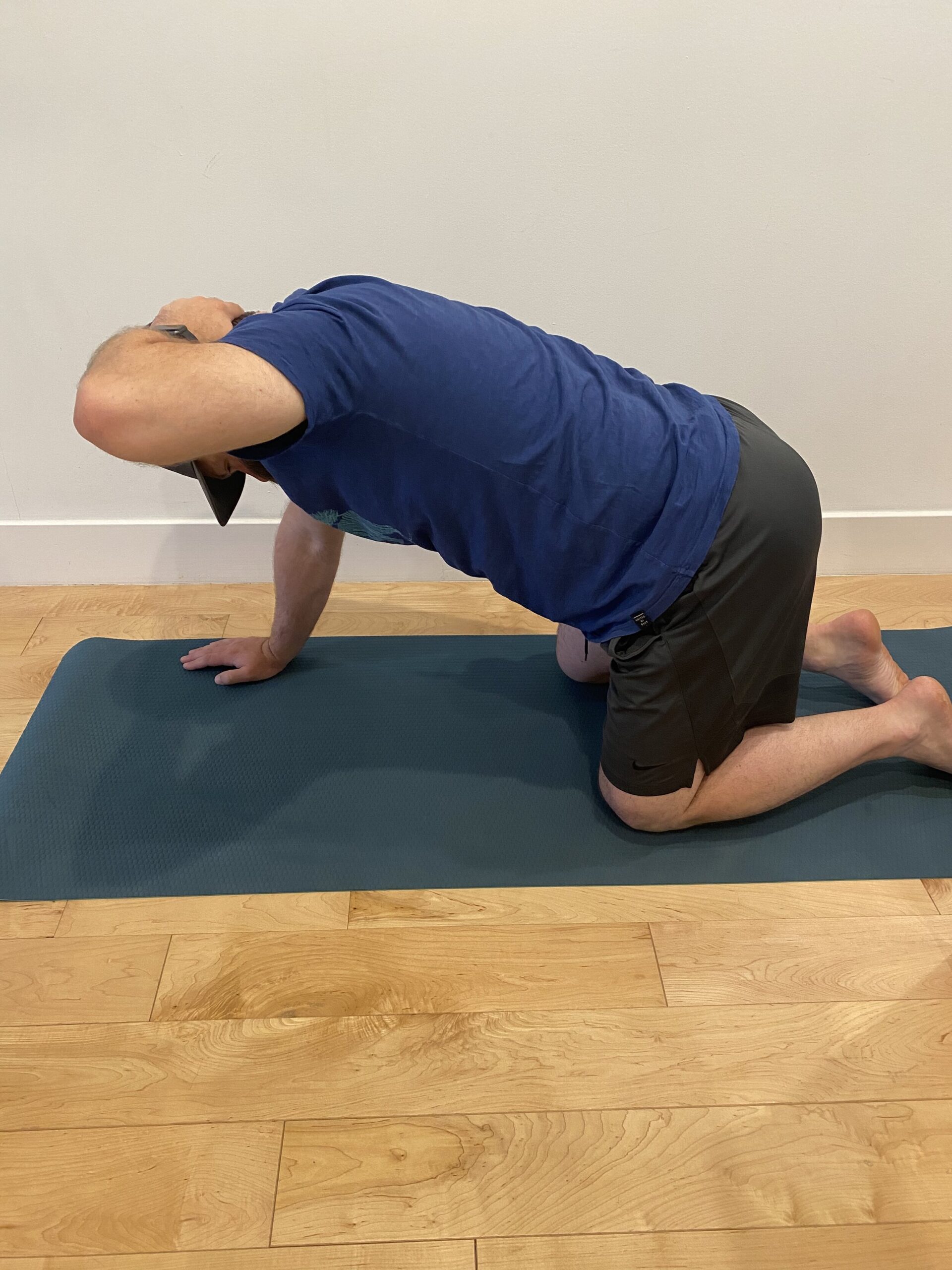
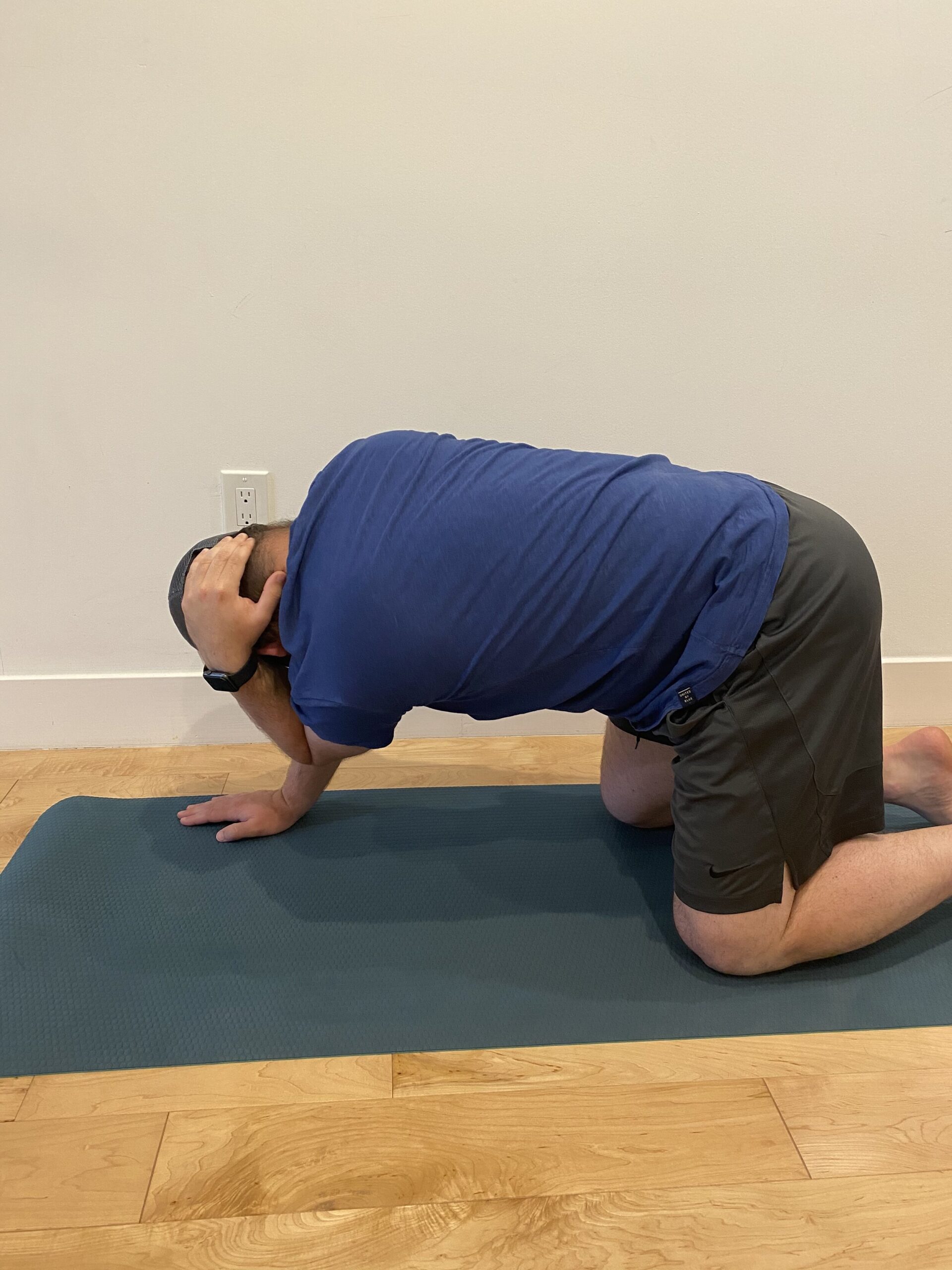
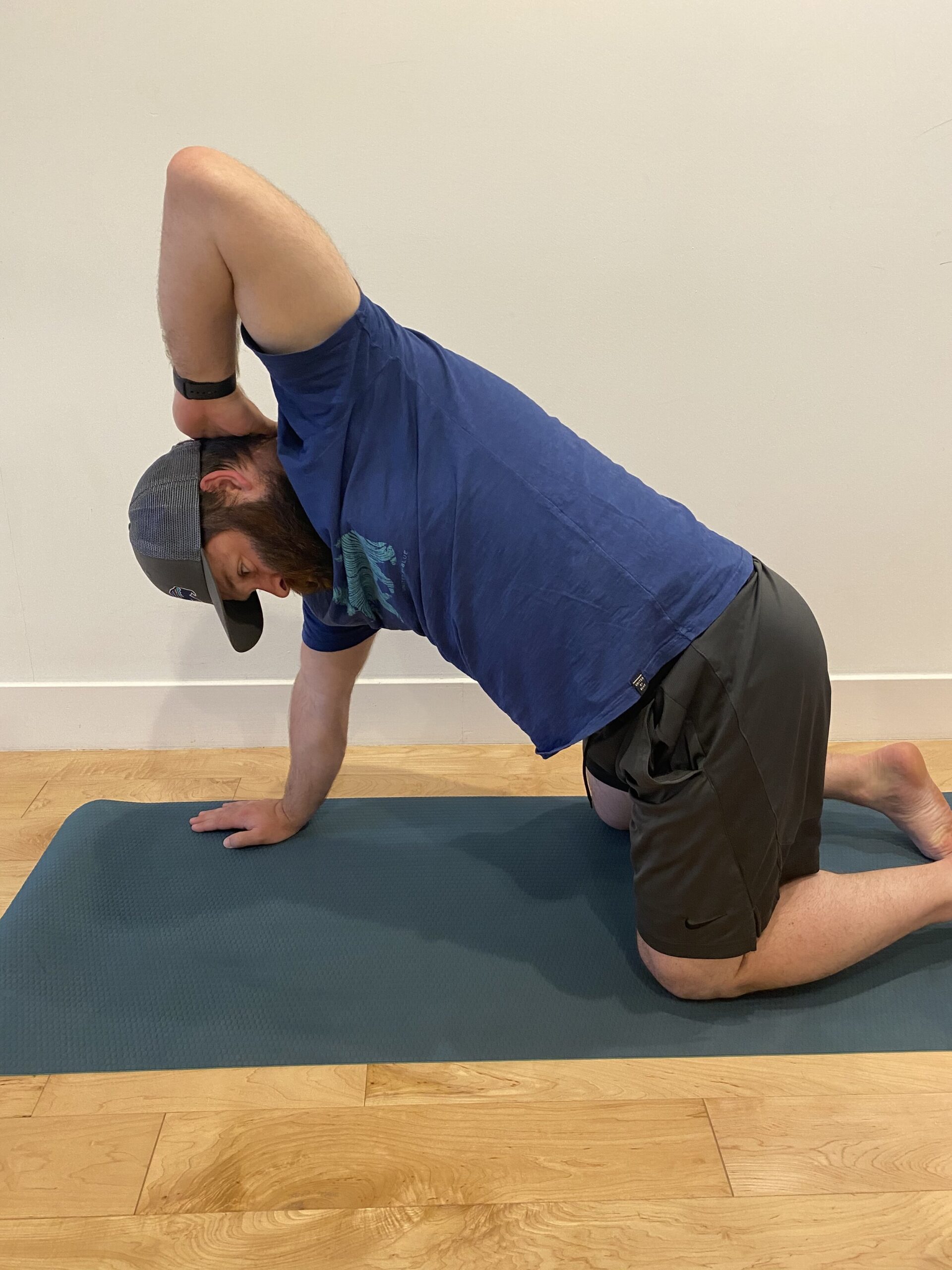
Wall Angel (Scapular Wall Slide)
Stand with your back against the wall, and bring your arms up against the wall with your elbows bent at 90 degrees. Slide your arms up the wall until they are over your head, and then bring them back down to 90 degrees. Make sure to squeeze your shoulder blades together and engage through your middle back. Keep glutes and abdominal muscles engaged to prevent your low back from arching off the wall. If you are having trouble with this, you can do the exercise seated against the wall with your knees bent and your heels touching your butt.
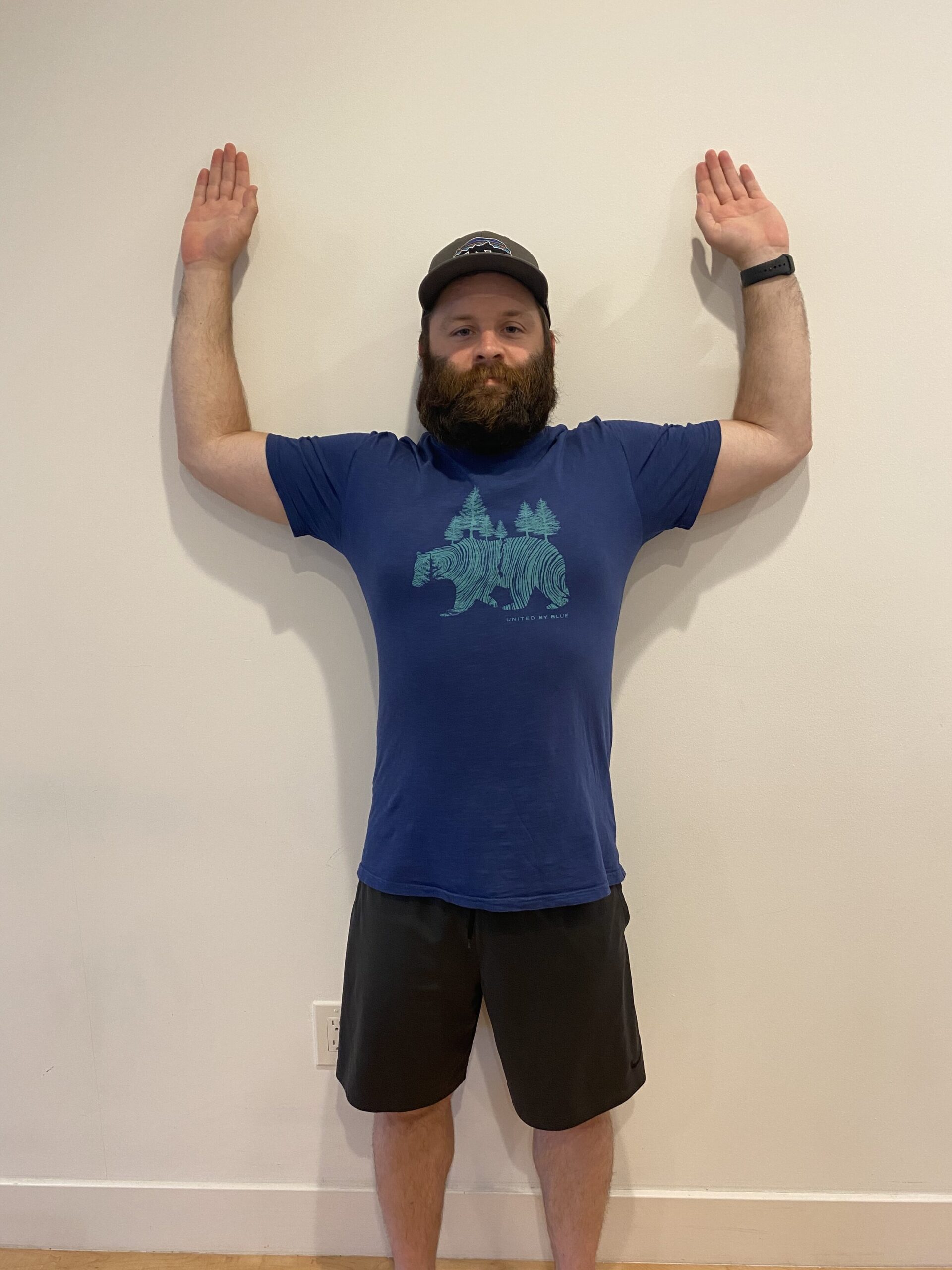
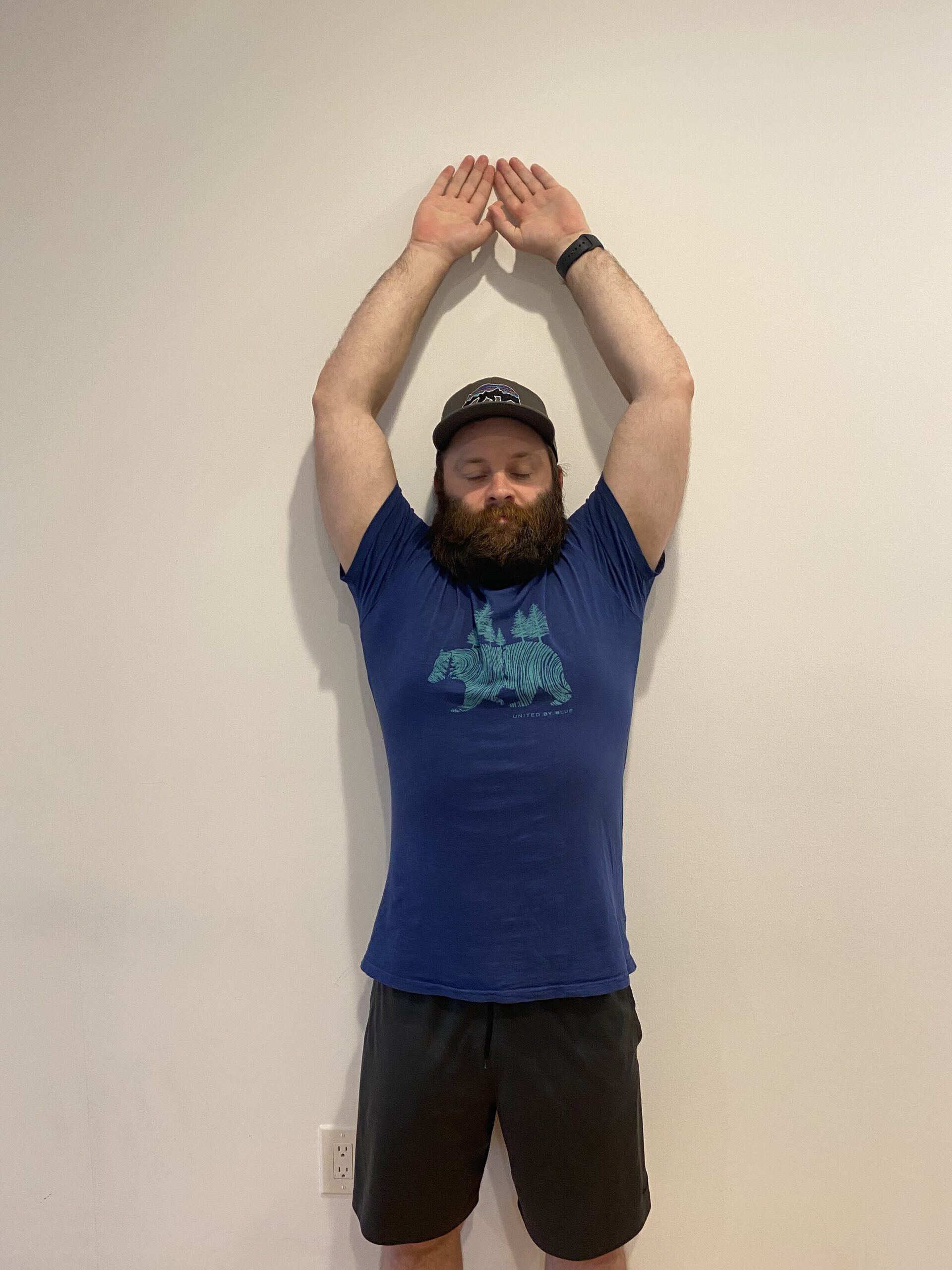
Short-Seated Wall Reach
Sit on the floor with your back and hips against the wall. Take a deep breath through your nose and forcefully exhale through your mouth while you reach forward with your arms. You mid and lower back should stay flat against the wall the entire time. Repeat 5 times.
Deep Diaphragmatic Breathing
Lie on the floor with your knees bent. Put one hand on your upper chest and the other on your stomach, below your rib cage. Take a breath in slowly through your nose, focusing on filling the lower portion of your lungs, pushing your stomach outwards. The hand on your chest should stay still, and the one on our stomach should rise. Hold for 5 seconds, and then slowly let your breath out through your mouth. Repeat for 3-5 minutes.
These exercises, along with regular massage, can help increase your mobility in your upper and mid back, and help enhance your athletic performance. It can also help to greatly improve your productivity if you have a seated desk position for your job!
Image References
- https://www.spineuniverse.com/anatomy/normal-curves-your-spine
- https://www.suspensionfitnessandbeyond.com/2018/06/24/thoracic_spine_stretch/
References
- https://www.ncbi.nlm.nih.gov/pmc/articles/PMC5727966/
- https://www.ncbi.nlm.nih.gov/pmc/articles/PMC4713806/
- https://www.thejoint.com/california/porter-ranch/porter-ranch-31033/these-6-exercises-can-improve-mid-back-mobility
- https://www.spine-health.com/conditions/upper-back-pain/thoracic-vertebrae-and-rib-cage
- https://www.umms.org/ummc/health-services/orthopedics/services/spine/patient-guides/adult-kyphosis
- https://www.spineuniverse.com/anatomy/normal-curves-your-spine
- https://buckssportschiropractic.com/2018/11/29/thoracic-spine-mobility-and-why-its-important/
- https://www.health.harvard.edu/lung-health-and-disease/learning-diaphragmatic-breathing
- http://pureperformancetraining.com/four-steps-for-unlocking-shoulder-mobility/
This article/video is for educational purposes only; do not attempt without your physician’s clearance. If you are in pain or injured, see your physician.
Copyright © Vidal Sports LLC 2020




